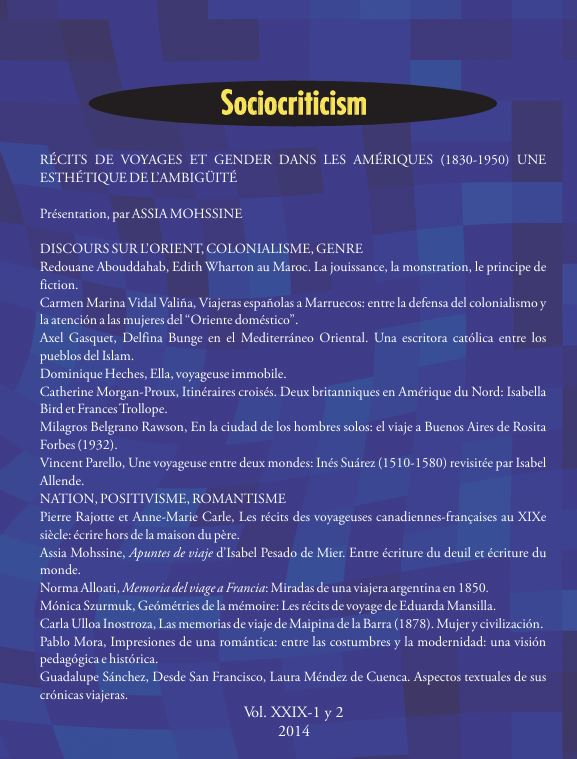Une voyageuse entre deux mondes: Inés Suárez (1510-1580) revisitée par Isabel Allende
Keywords:
Inés Suárez, Isabel AllendeAbstract
More than four hundred years after, the life of Inés Suárez still arouse the admiration of all lovers of historical novels and book travels. This humble seamstress, who was born in a little village near Plasencia, Extremadura, became the actual owner of Cuzco after the death of her first husband, Juan de Málaga. After this, she was conquistadora and encomendera of Chile with her lover, don Pedro de Valdivia. At forty, she finally became the wife of Chile’s governor Rodrigo de Quiroga. Inés Suárez is a combination of different archetypes of femininity: loose woman, holy warrior, protect virgin and perfect wife according to the Catholic Church. If historical Inés ascended the social ladder and is known for her military glory, the fictional Inés of Isabel Allende’s novel is also illustrious in her condition of narrator and writer.












